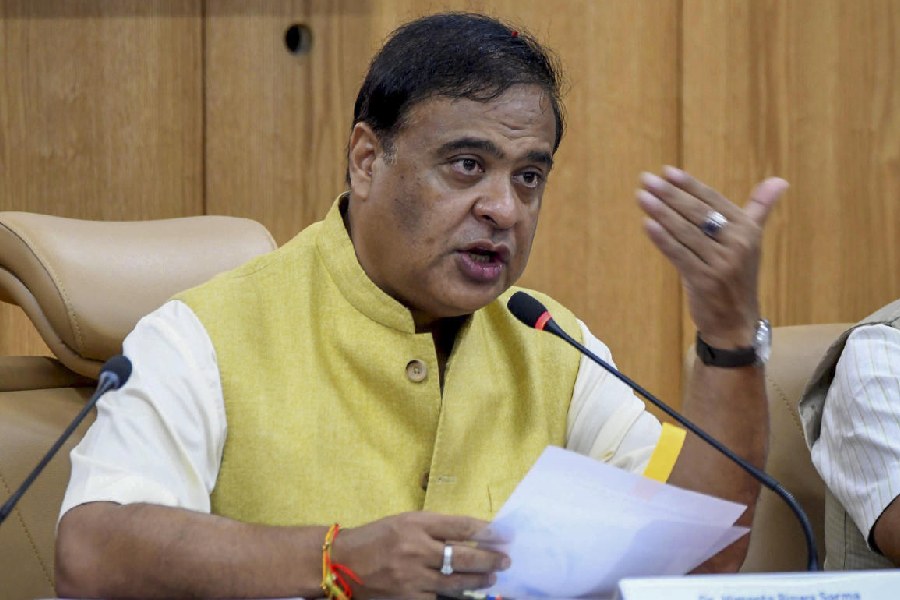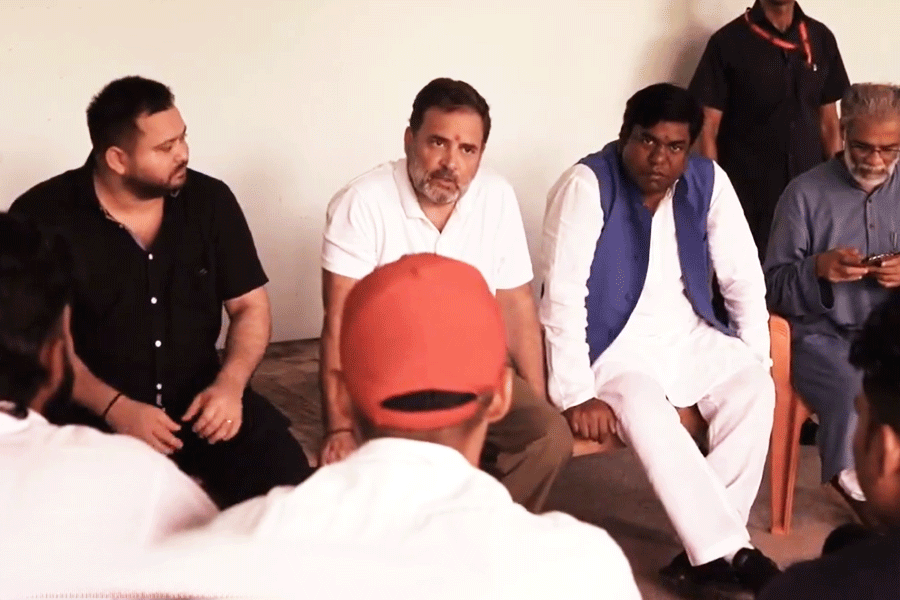 |
| A view of the Raj Bhavan in Shillong |
Shillong, March 4: It has been a baptism by fire. Burned down during a blaze in March 2003 when the Meghalaya Democratic Alliance government was being sworn in, the history of the Raj Bhavan is rising, phoenix-like, from the ashes.
Since most of the documents were destroyed in the inferno, Governor M.M. Jacob had asked the chief secretary to conduct a probe.
Despite the formation of a committee to look into the fire and its causes, the Governor has not received any feedback on the incident yet.
But it has kindled Jacob’s eagerness to document the history of Shillong’s Raj Bhavan before its legendary past is lost to posterity.
“History sleeps here,” explained the Governor. What is emerging is a book on the Raj Bhavan written by historian and scholar Imdad Hussain, with a foreword by Jacob himself. The fact that it would coincide with the Raj Bhavan’s centenary celebrations in October this year would make it that much more meaningful.
The book would be an attempt to record a very interesting segment of the history of the Northeast, wherein other states of the erstwhile Northeast Frontier Agency (NEFA), including Arunachal Pradesh, Assam and Mizoram, would also be highlighted.
“Since the British made some of their most important decisions at the Raj Bhavan, it has become a repository of historic judgments,” averred Jacob.
Hussain has taken pains to chronicle not just the architectural heritage of the Raj Bhavan but the entire gamut of history, which traces the birth and development of Shillong. This is in accordance with the Governor’s wishes.
He added that the Raj Bhavan, which was the chief commissioner’s residency from 1874-97, was destroyed by a massive earthquake in 1898 and rebuilt in 1903.
The earlier stone masonry was replaced by the lighter and quake-resistant timber woodwork to prevent the destruction of the edifice. The materials for the temporary structures built in the interim period to house the commissioner were later reused to build Pinemount School and the Chateau in Upper Shillong, where the commissioner resided for a while. This chateau no longer exists.
From 1905 onwards, the Raj Bhavan — made along the lines of an English country house — had been subjected to minor additions and alterations by successive Governors, but its basic structure remained the same, explained Hussain. He mentioned such installations as electricity and water-based sanitary systems at the Governor House between 1905 and 1921 and the fact that the building housed the Legislative Assembly in 1921-22.
His book would not only focus on the social aspects of Raj Bhavan’s occupants — including the fine dining and inventory of curios and artefacts — but also major political developments that led to the formation of old Assam and the Northeast.
As the author of Shillong: British Enclave to Tribal City, Hussain is dismayed at the widespread destruction of Shillong’s heritage sites and structures, including Ward’s Lake.
“My book would carry portraits of all the governors of Raj Bhavan and of Henry Stewart Beaver, who planned Shillong’s layout and roads. Many of the portraits in the book were accessed from the India Office Collections at the British Library and Pitt River’s Museum in Oxford. Incidentally, some of the English officers who served in India took back photographs of their seniors so that they are now housed in the libraries and museums of England,” he explained.
Hussain has also collected invaluable materials from the National Archives of India, West Bengal State Archives at Calcutta, Assam State Archives at Guwahati, the deputy commissioner’s office in Shillong as well as old records available at the Raj Bhavan itself. Though the book will rely heavily on archival material, it would be written in a style that would appeal to the lay reader. Complete with attractive vignettes, it would present a slice of history in ages gone by.











